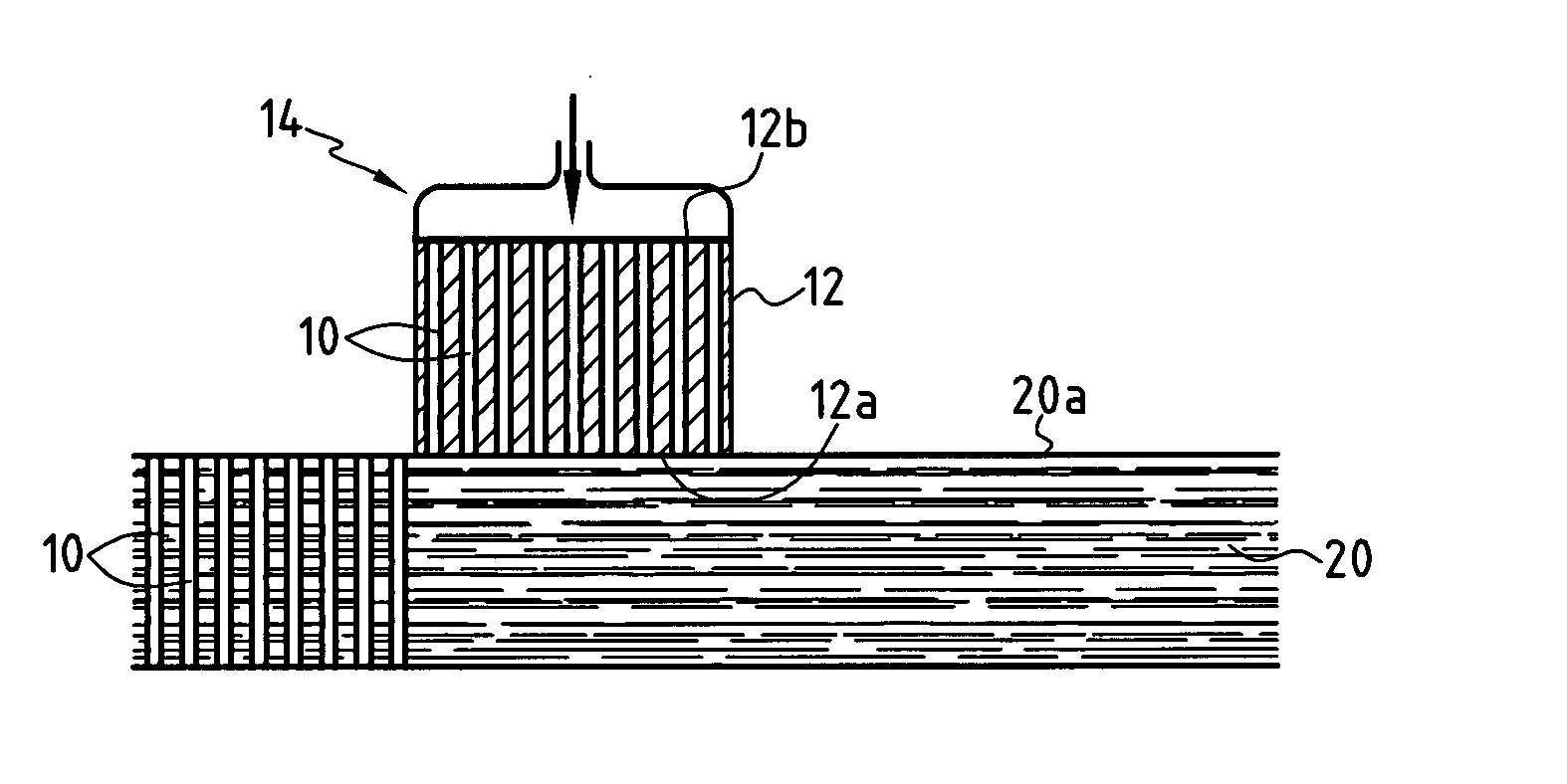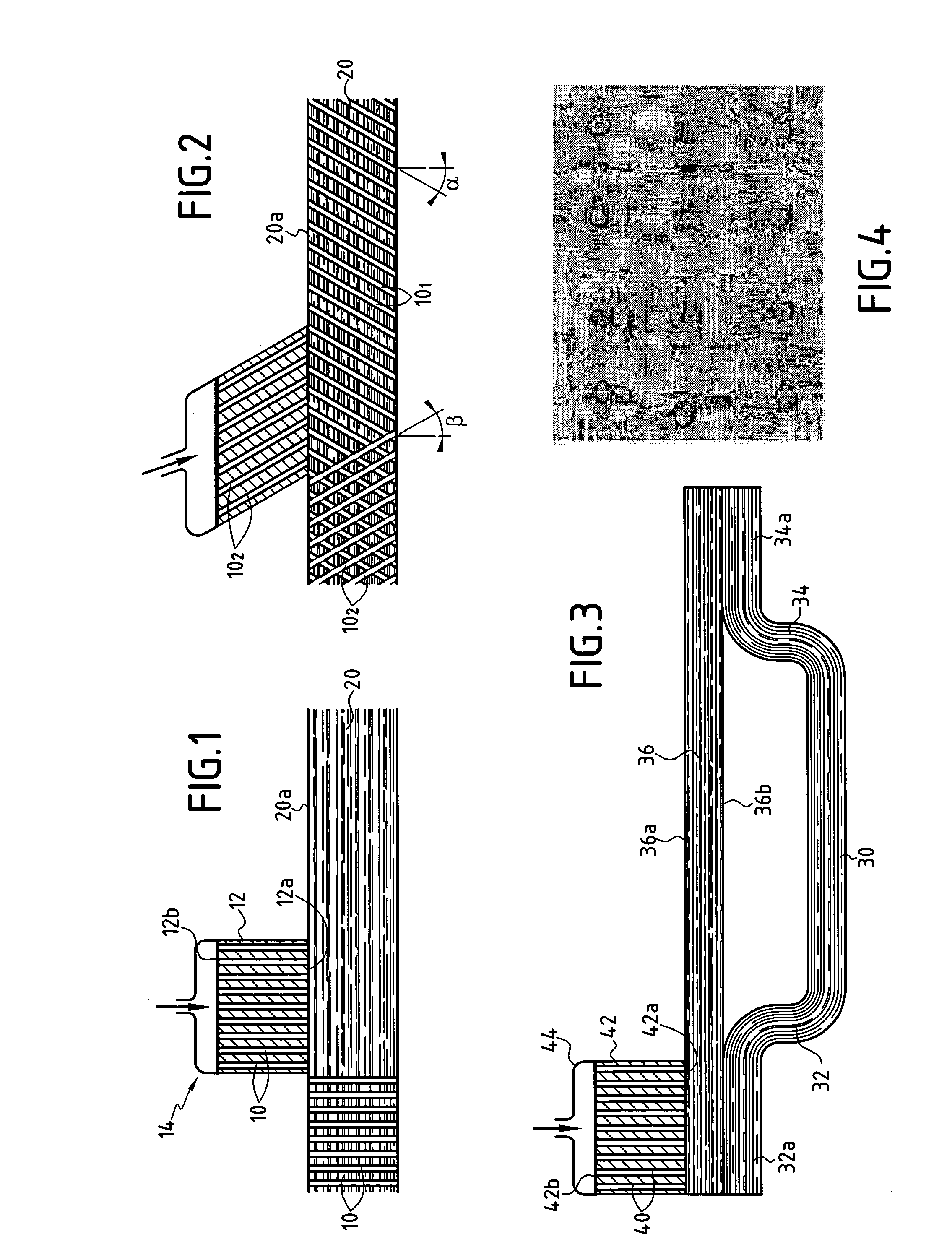Making a blank by reinforcing a fiber structure and/or bonding fiber structures together, and use in making composite material parts
a fiber structure and composite material technology, applied in the field of blanks by reinforc/or bonding a fiber structure together, can solve the problems of insufficient or difficult reinforcing, rigid fiber structure, and relatively unsuitable for being shaped, so as to achieve simple shape, reduce the effect of implantation density and simple industrial process
- Summary
- Abstract
- Description
- Claims
- Application Information
AI Technical Summary
Benefits of technology
Problems solved by technology
Method used
Image
Examples
example 1
[0097] Two fiber plates were formed, each by stacking five layers of SiC plain weave fabric made up of SiC yarn such as that sold under the name "Hi-Nicalon" by the Japanese supplier Nippon Carbon. The resulting fiber plates had a pore volume ratio equal to about 60%.
[0098] The fiber plates were consolidated by forming a PyC interphase and depositing SiC by chemical vapor infiltration, and the pore volume ratio after consolidation was reduced to about 50%.
[0099] Pins were made by stiffening a 500 filament SiC yarn supplied by the Japanese supplier Nippon Carbon, with stiffening being achieved by densifying with a BMI resin. The diameter of the pins was about 0.4 mm.
[0100] The pins were implanted through the superposed consolidated fiber plates at a density of 16 pins per square centimeter (cm.sup.2). The photograph of FIG. 4 shows the surface of the resulting fiber blank. Implanting the pins did not raise any particular difficulties.
[0101] The blank fitted with the pins was densifie...
example 2
[0105] A fiber structure was made in the form of a multilayer cloth obtained by three-dimensional weaving of "Hi-Nicalon" SiC fiber yarn, such as that used in Example 1. The three-dimensional fabric comprised ten layers with a pore volume ratio equal to about 65%.
[0106] The fiber structure was consolidated as in Example 1, with the pore volume ratio after consolidation being reduced to about 55%.
[0107] Pins of the same kind as in Example 1 were implanted in the consolidated fiber structure at a density of 16 pins / cm.sup.2.
[0108] The resulting blank was then densified with an SiC matrix by chemical vapor infiltration.
example 3
[0109] The procedure was the same as in Example 2, but pins were implanted at a density of 32 pins / cm.sup.2.
PUM
| Property | Measurement | Unit |
|---|---|---|
| Fraction | aaaaa | aaaaa |
| Fraction | aaaaa | aaaaa |
| Fraction | aaaaa | aaaaa |
Abstract
Description
Claims
Application Information
 Login to View More
Login to View More - R&D
- Intellectual Property
- Life Sciences
- Materials
- Tech Scout
- Unparalleled Data Quality
- Higher Quality Content
- 60% Fewer Hallucinations
Browse by: Latest US Patents, China's latest patents, Technical Efficacy Thesaurus, Application Domain, Technology Topic, Popular Technical Reports.
© 2025 PatSnap. All rights reserved.Legal|Privacy policy|Modern Slavery Act Transparency Statement|Sitemap|About US| Contact US: help@patsnap.com


